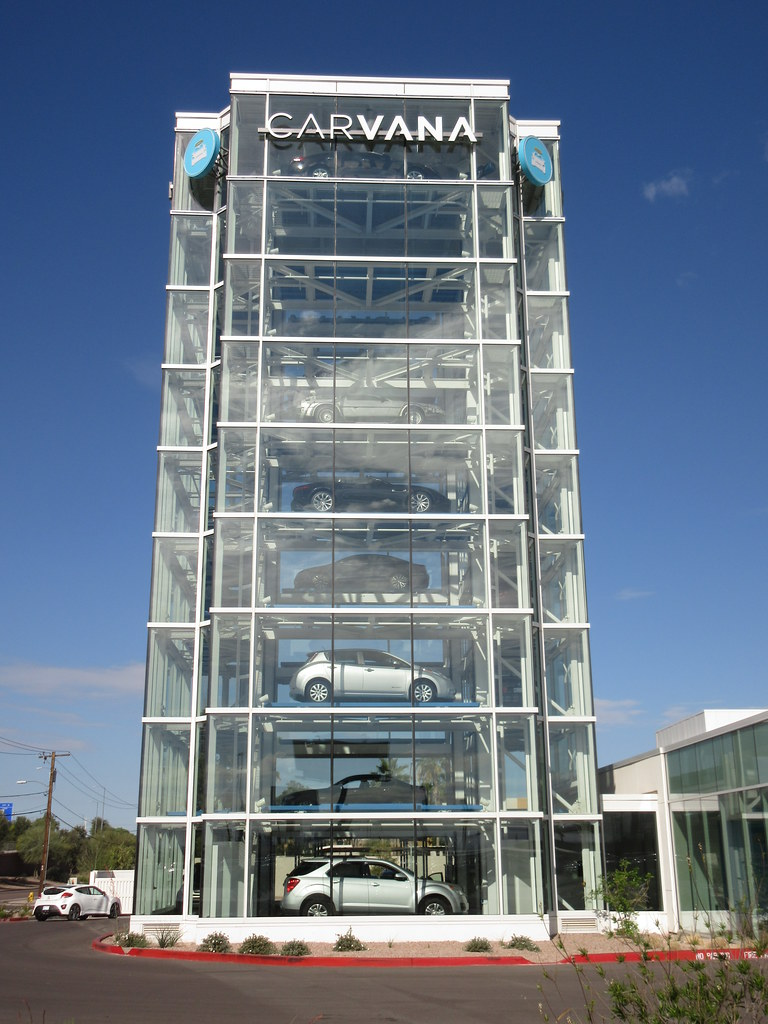
The online used car retailer Carvana (NYSE: CVNA) gained 17% post-earnings, made an all-time high, and has risen to be one of the greatest corporate comebacks in recent memory, currently trading at $390 per share with a market capitalisation exceeding $45 billion. It marks an extraordinary recovery from its darkest period, when the company's stock plummeted 99% from its 2021 peak of $370 to below $10 in 2022, carrying over $6.6 billion in long-term debt and facing legitimate bankruptcy concerns. The turnaround was made possible with the help of Ernest Garcia III, who co-founded Carvana in 2012 alongside Ryan Keeton and Ben Huston as a subsidiary of his father's DriveTime Automotive Group. Garcia III's ambitious goal was to revolutionise the antiquated car-buying experience through technology and vertical integration, creating an entirely digital platform that would eliminate traditional dealership friction. The company's signature car vending machines, an automated tower that dispense purchased vehicles, became iconic symbols of this disruptive approach, generating marketing value while embodying the company's tech-forward brand identity.
Carvana's path to its current $45 billion valuation was anything but smooth. During the pandemic, used cars were selling like hotcakes, and the company was in position for explosive growth as consumers embraced everything online, including car purchases, pushing shares to astronomical highs. The rapid expansion that came with the boom had the company prioritise growth over profitability, accumulating massive debt while building expensive infrastructure, including reconditioning facilities and logistics networks across the country. When macroeconomic conditions shifted in 2022 and the used car market corrected, Carvana found itself holding excess inventory, burning through cash, and facing a liquidity crisis that brought it to the brink of bankruptcy. The 2023 losses were what brought it down: reporting a full-year net income of only $150 million on $10.8 billion in revenue, a razor-thin 1.4% margin that was mainly from a one-time gain from debt restructuring rather than operational growth.
The company's comeback strategy is nothing short of amazing, implemented throughout 2024 and showing results into 2025. Under Garcia III's leadership, Carvana executed what they termed a "Three-Step Plan" that prioritised profitability over growth, first achieving positive Adjusted EBITDA, then driving significant unit economics, and finally scaling profitable growth. The strategy involved massive cost cutting (removing over $1.1 billion in annualised expenses), inventory optimisation, and technological improvements that reduced operational inefficiencies. By Q2 2025, this approach yielded results where the company sold 143,280 retail units (+41% YoY), generating $4.84 billion in revenue, with a net income of $308 million and an industry-leading 12.4% adjusted EBITDA margin. Carvana's vertically integrated model, which covers vehicle acquisition, reconditioning, financing, and logistics, has finally shown the scalability advantages that Garcia had long promised investors. The company projects full-year 2025 adjusted EBITDA of $2.0-2.2 billion, a long shot from $1.38 billion in 2024, while maintaining growth momentum through improved unit economics rather than unsustainable cash burning.
Carvana's future appears increasingly secure as traditional automotive retail faces structural obstacles while the company has successfully differentiated itself through technological superiority and operational scale. The used car market represents a trillion-dollar opportunity where Carvana currently holds approximately 1% market share, suggesting room for expansion without needing market creation. Traditional dealers pressure mainly comes from changing consumer preferences toward digital experiences, inventory management challenges, and higher operational costs that Carvana's model inherently avoids and excels in managing. The company's infrastructure comprising of 56 ADESA locations with reconditioning capacity for over 2 million units annually and a proprietary logistics network reaching 80% of the US population. It creates a higher barrier to entry that competitors would struggle to replicate economically. Carvana proved that its model generates superior unit economics at scale, with gross profit per unit exceeding traditional dealers while maintaining customer satisfaction advantages. As the company continues expanding into this vast market with proven operational leverage, its competitive moat should strengthen further, positioning Carvana to capture disproportionate value creation as automotive retail continues its inevitable digital transformation.
Source: WIRED, PitchBook, Reuters, Business Insider
Photos: Unsplash
